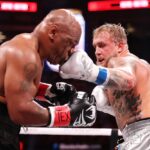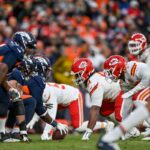It is possible to pitch at Coors Field. Here’s how. By Zach Fogg
Mile High Sports’ Zach Fogg (@zachfoggsports) analyses the type of pitching the Rockies need in order to win at their home park.
This is a must-read for seamheads.
Read more
In baseball, as in life, there are certain philosophies that if followed, can help franchises sustain success over longer periods of time. Chief among them in my mind is one underlying principle: Know your ballpark.
Over the better part of a decade, Rockies GM Dan O’Dowd has done his best to convince us all that he is building his team based on just that: the idea that he knows Coors Field and understands what it’s going to take to build a winner there. As far as I can tell, his recipe for success includes constructing a potent lineup, solid defense (this season the exception), and paying good money for below-average pitchers with thin skins (see; Guthrie, Jeremy).
To be fair to O’Dowd, he’s almost two-thirds right. A solid everyday lineup is a cornerstone of any successful baseball team, and the expansive hitter’s dimensions of Coors makes solid defense more helpful than it might in say, Fenway Park (though personally I would debate the return on investment of paying any extra for a premier defensive player at most positions).
The one area where O’Dowd seems to diverge from the rest of us is pitching. Time and time again, Dealin’ Dan seems to strike out on pitchers he brings in, whether through the draft, trades, or free agency. Then came the conference call with season ticket holders a month ago, where one quote by O’Dowd in particular stuck out in my mind. When asked about Colorado’s new ‘paired pitching rotation,’ O’Dowd matter-of-factly stated “This was not a desperation move as has been portrayed. This is something I have been looking at since I came to this organization and realized the issues presented at playing at 5,183 feet above sea level.”
And there it was. Dan O’Dowd had accepted failure from his pitching staff for years, since he first came to the organization! Of course it wasn’t a desperation move. A team has to expect success in order to consider something as drastic as this to be a desperation move. So instead, the paired pitching idea was the product of a spit-balling session led by a man who considered anything below a 5.00 team ERA to be just gravy.
It was on the heels of this chain of events that a disgusted John Reidy (co-conspirator of this very site) posed the question, “Why has no one done a comprehensive study of what kind of pitchers would be successful at Coors Field?” The implication is simple: Instead of a gimmicky publicity stunt like paired pitching rotations, why haven’t the Rockies brass done their homework on what kind of pitchers have been successful here in the past? Then investing in acquiring those pitchers and developing hurlers like similar to those in their farm system.
In the immortal words of Barney Stinson, “Challenge accepted!” I may not be able to do anything to change the way the Rockies do business, but as the “By the Numbers” blogger for milehighsports.com (shameless plug for myself, read my piece every Saturday), I see no reason why the comprehensive study on successful pitching at Coors Field can’t start right here.
In an effort to keep this piece under 1,500 words, I limited my study to eight pitchers over a three year span (2009-2011). Each has pitched a minimum of 20 innings in Coors Field over that time, and each pitched at least two of the three seasons on a division rival of Colorado (two from each team).
The candidates are as follows; Matt Cain, Tim Lincecum, Clayton Kershaw, Chad Billingsley, Ian Kennedy, Dan Haren, Mat Latos, and Clayton Richard. All are reasonable pitchers in their own right – guys that would crack the top three of most starting rotations in the majors. Conveniently (I honestly didn’t plan it this way), four have solid numbers at Coors Field, the other four have been mediocre to awful within the confines of 20th and Blake.
Cain (3.49 ERA), Lincecum (3.15), Latos (3.51), and Kennedy (2.52) comprise the good. What all these pitchers have in common is changing speeds. Over the course of their careers, none of them have thrown any variation of fastball more than 66% of the time, with Lincecum and Latos throwing fastballs at less than a 60% clip. Furthermore, three of them throw a curveball and/or changeup well over 20% of the time, with the two best ERAs at Coors in the group at or around 30%.
Compare that to the bad pitchers. Kershaw (5.85 ERA), Billingsley (7.59), Richard (7.89), and Haren (4.44) all throw some variation of fastball over 70% of all their pitches, with Haren leading the way with a whopping 82% fastball rate! Interestingly, three of the four throw a cut fastball at least 10% of the time as part of their repertoire, a distinction that not one of the ‘good’ pitchers on our list share. Only one of the ‘bad’ pitchers (Billingsley) threw a changeup and/or curve over 20% of the time, but he also has the least-thrown slider (3%) in the entire group of eight.
Let’s compare these numbers to what I would consider (arguably) the four most successful pitchers in Rockies history, Jeff Francis, Aaron Cook, Jason Jennings, and Pedro Astacio. Of these four, only Cook (a known sinkerballer) threw fastballs over 61% of the time. Francis and Astacio threw (still throws in Francis’ case) curveballs and sliders over 30% of the time while Jennings utilized a slider for 27% of his pitches.
Now it gets fun. Let’s see how the three biggest busts in Rockies history compare to the numbers we’ve thrown out so far (I’d include Daryl Kile or Bret Saberhagen too but most of these advanced stats weren’t around for a lot of their careers). Mike Hampton threw fastballs over 70% of the time, while throwing curves and changeups less than 20%. Denny Neagle suffered the same problem as so many lefties at Coors Field; he had no slider (see: Morales, Franklin). Hitters simply sat on his fastball (58%), and adjusted to the offspeed (40%). Left-handed pitchers have to be able to throw that slider at Coors. That brings us to the current bust; Mr. Jeremy Guthrie. While Guthrie throws his fastball a manageable 64% of the time, he throws changeups and curveballs only 17% of the time.
Just to review: The pitchers that have historically (and currently) had the most success at Coors Field as a general rule threw any variation of fastballs less than 65% of the time, threw changeups and curveballs over 20% of the time, mixed in a slider 10%-20%, and rarely threw cutters. These are the facts. Take them for what they’re worth.
You may be asking yourself why I spent so much time on pitch selection during this study. The bottom line is that there was no better correlation to success at Coors Field than mixing speeds.
The first stat I looked at was ground ball percentage, but there simply wasn’t a correlation. All of the pitchers listed have ground ball rates of 38%-50% (understandably Cook’s is a bit higher). Cain’s is 37%, Lincecum’s in 47%. Both have been very successful. Guthrie’s is 40%, Richard’s is 49%, and both have been garbage. Home run to fly ball ratio was another stat I delved into, but again, the numbers ran the gamut from 6.5% to 12.5% with no real correlation. Most of the pitchers sat right around 10%, with varying degrees of success.
What this says is that despite what Dan O’Dowd is telling us, it is possible to pitch at Coors Field, the Rockies are simply recruiting the wrong types of pitchers. Look at the current crop; while Friedrich and Chacin both mix pitches well and show promise for development, most of the best baseball minds I know have told us that Drew Pomeranz (77% fastball, no slider) profiles like Clayton Kershaw. Juan Nicasio came into the league as a pitcher who threw 75%-80% fastballs and everything else was a work in progress. Alex White in limited big league duty is throwing some variation of fastball over 80% of the time! Are the Rockies just completely oblivious to these numbers?
Guys like Guthrie beg the question; why would you pay a bad pitcher good money to pitch in a hitter’s park? It’s not that he deserves good money to pitch in a pitcher’s park, but I simply don’t see the value of a guy like him in Coors Field. Rather the Rockies should be paying top dollar for a top of the line pitcher, while drafting and developing guys that may not have overwhelming stuff, but already have at least a slight grasp on the concept of mixing pitches going into the farm system.
This may not be the most comprehensive study of pitching at Coors Field, but I would argue that it is a pretty substantial sample size and the results are pretty convincing to me. At any rate, it’s a helluva lot more substantial than anything the folks down at 20th and Blake seem to have produced.





